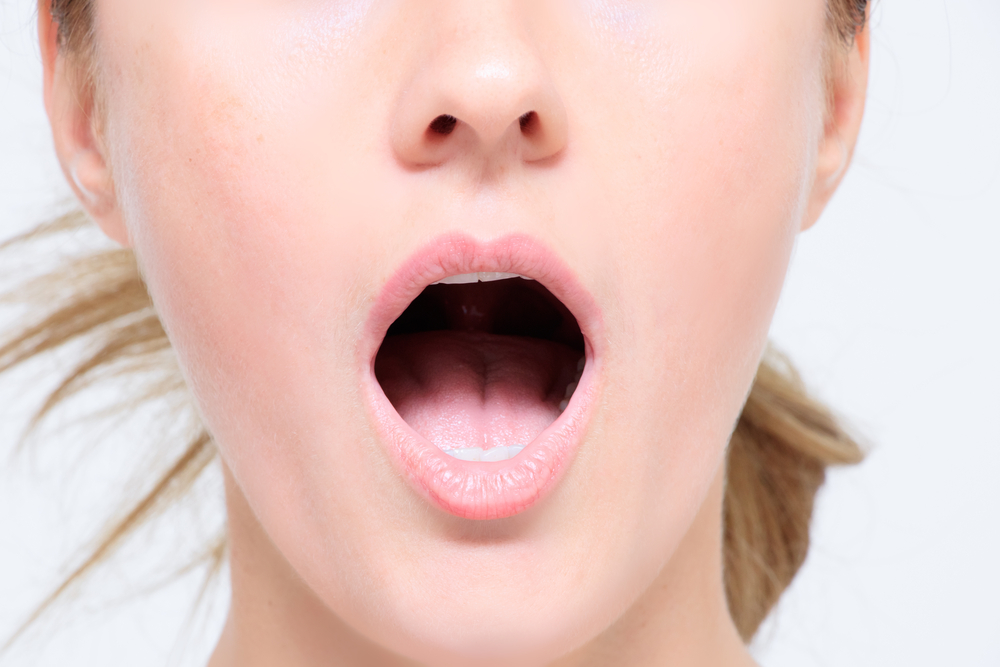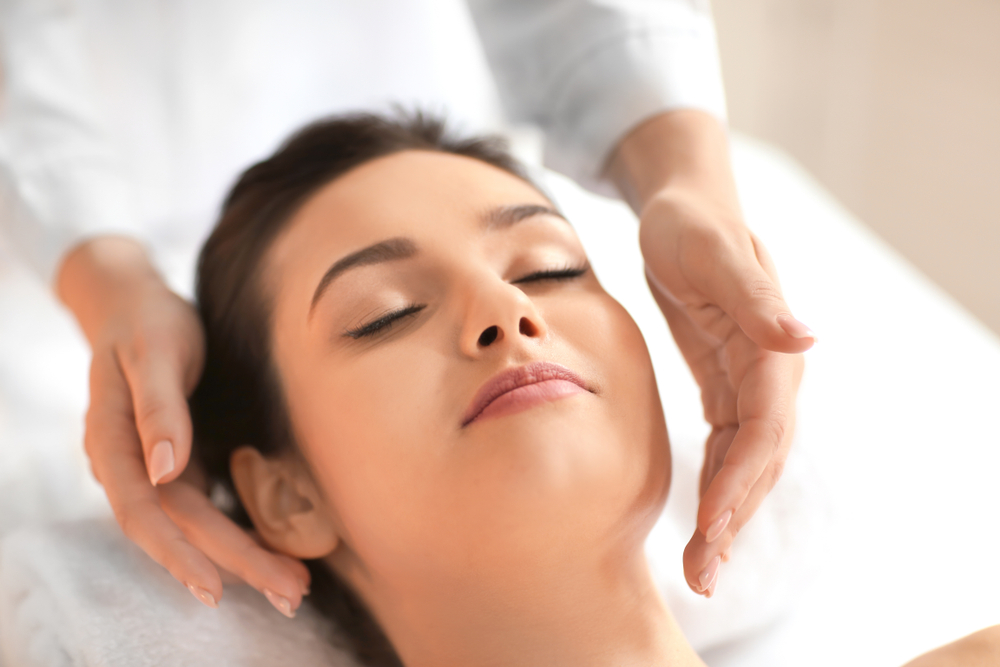Unlocking Relief with TMJ Therapy: Your Path to TMJ Comfort
Are you plagued by the persistent discomfort and pain associated with TMJ (Temporomandibular Joint) issues? If so, you’re not alone. The good news is that at Sac Sleep and Breathing, under the guidance of Sacramento TMJ specialist, Dr. A. Scott Grivas III, you’ll find comprehensive TMJ therapy and effective solutions to alleviate temporomandibular disorders and related concerns.
Our dedicated team is committed to helping you regain your oral comfort, and this page will walk you through the journey to relief from jaw pain. Learn more by calling our Sacramento office at (916) 735-4060.


What is TMJ Disorder?
The temporomandibular joint (TMJ), a complex hinge joint situated just below the ear, plays a vital role in connecting both sides of the skull to the lower jaw. The temporomandibular joint is responsible for the motions involved in mouth opening, closing, and the lateral movement of the jaw.
However, if you begin to experience discomfort, pain, or limitations in the function of this joint, it’s a strong indication that you may be grappling with a condition known as temporomandibular joint disorder, or TMJ/TMD. Our Sacramento TMJ specialist, Dr. Grivas can diagnose issues with your temporomandibular joint and provide effective TMJ treatment.
Symptoms of TMJ/TMD
If you’re encountering any of the following symptoms, it’s advisable to schedule an appointment for a professional jaw examination with Dr. Grivas. Typical signs of temporomandibular joint disorder include:
- Frequent jaw pain and tenderness
- Inflammation in the jawbone or joint
- Headaches, toothaches, or earaches
- Swollen lymph nodes
- Chewing difficulties or discomfort while chewing
- Ringing in the ears (tinnitus)
- Joint locking, leading to difficulty in mouth opening or closure


Causes of TMD
Given the intricate nature of the various temporomandibular joint disorders (TMJ), pinpointing the exact cause of TMJ disorder can be challenging. Potential causes of disorders of the temporomandibular joints may encompass:
- Disk erosion or displacement within the joint
- Cartilage damage in the jaw joint due to arthritis
- Jaw joint trauma resulting from an impact
- Various types of arthritis and osteoarthritis
- Jaw injuries
- Long-term (chronic) teeth grinding or clenching
- Specific connective tissue diseases that can affect the TMJ
Experience Relief with Vivos Treatment & TENS
At Sac Sleep and Breathing, our Sacramento TMJ specialist offers Vivos oral appliance treatment, a transformative solution designed to alleviate your jaw pain by gradually realigning your mouth and jaw structure. These customized appliances provide comfort and convenience, offering a discreet way to treat TMJ symptoms
To enhance the effectiveness of your Vivos appliance, we incorporate the use of a TENS (Transcutaneous Electrical Nerve Stimulation) unit. This cutting-edge device administers low-level electrical pulses to your muscles, promoting relaxation and rapid pain relief. Following treatment, you’ll experience increased comfort and the ability to open and close your mouth without discomfort.
Benefits of TMJ Therapy
Seeking TMJ therapy with our Sacramento TMJ specialist can offer numerous benefits including:
- Pain Relief: TMJ therapy aims to alleviate the chronic pain and discomfort associated with temporomandibular joint disorders (TMJ). By addressing the underlying causes of the condition, patients often experience reduced pain in the jaw, face, and neck.
- Improved Jaw Function: Therapy for temporomandibular disorders helps restore proper jaw function, which can lead to better mobility and the ability to open and close the mouth without difficulty. Patients can enjoy improved chewing, speaking, and overall jaw movement.
- Prevention of Dental Damage: TMJ therapy can prevent or reduce dental problems caused by teeth clenching and grinding, which is common in TMJ disorder sufferers. Wearing a custom dental appliance or mouthguard can protect teeth from excessive wear and tear.
- Enhanced Quality of Life: By reducing pain and improving jaw function, TMJ therapy can significantly enhance a patient’s quality of life. Treating TMJ disorders allows individuals to eat, speak, and smile with greater ease and comfort.
- Stress Reduction: Stress and anxiety often exacerbate the symptoms of TMJ disorders. Therapy may include stress management techniques or counseling, which can help patients reduce stress and its impact on their condition.
- Avoidance of Medication Dependency: Some patients may require pain-relieving prescription medications before TMJ therapy. TMJ therapy aims to reduce or eliminate the need for long-term medication use, addressing the root causes of pain and discomfort.
- Prevention of Complications: Early intervention for TMJ disorders through TMJ therapy can prevent the development of complications such as chronic headaches, ear and facial pain, and joint damage. This proactive approach can save patients from more severe health issues down the road.


Alternative TMJ Treatments
Incorporating specific exercises, lifestyle changes, and other nonsurgical treatments can be beneficial in alleviating jaw tension and pain associated with TMJ disorders. If you experience any discomfort while performing these exercises, you should stop the motions immediately, as it may indicate the need for further healing and rehabilitation of surrounding muscles.




Relaxation Exercises
Engaging in some relaxation techniques and breathing exercises can significantly reduce pressure and tension in your jaw muscles. Try inhaling slowly for a count of five or ten, followed by a gradual exhalation, and repeat this technique. Not only can it alleviate TMJ-related discomfort, but it can also help diminish overall stress levels and jaw injury.
Strengthening Exercises
Among the recommended strengthening exercises is one where you place your tongue on the roof of your mouth and attempt to open your mouth as wide as possible. Another effective exercise involves positioning your tongue on the roof of your mouth while simultaneously pushing your lower jaw forward as far as it can comfortably go, with your tongue remaining in place.
Stretching Exercises
Gentle jaw and joint stretching exercises provide an efficient way to alleviate TMJ pain. Begin the jaw movement by relaxing your jaw, then, with your teeth slightly apart, slowly open your mouth as wide as you can while looking upward with your eyes. Maintain this position for a few seconds, then gently close your mouth.
After closing your mouth, shift your jaw to the left while simultaneously directing your gaze to the left, without turning your head or neck. Hold this position briefly before returning to the center. Repeat the same stretch on the opposite side to complete the exercise routine.
Alternating Your Sleep Position
Changing your sleeping position can be a simple yet effective way to alleviate TMJ discomfort, particularly if your TMJ symptoms are exacerbated during sleep. Sleeping on your back is often recommended for TMJ patients, as it reduces pressure on the jaw joint and minimizes the risk of clenching or grinding your upper and lower teeth together.
Acupuncture
Acupuncture is an alternative TMJ (Temporomandibular Joint) treatment that involves the insertion of thin needles into specific points on the body. While the exact mechanism is not entirely understood, many patients report relief from TMJ-related chronic pain and tension. Acupuncture is believed to stimulate the release of endorphins, which act as natural painkillers, and it may also help relax the jaw muscles.
Massage
Massage therapy is another alternative approach for managing TMJ disorders and other symptoms related to TMJ disorders. Skilled therapists can target the muscles around the jaw and neck, helping to reduce tension and improve blood flow. Massaging the affected areas can alleviate muscle spasms and discomfort, providing relief to TMJ patients. Consult a trained physical therapist who understands the complexities of TMJ disorder and can tailor the massage to your needs.
Stick to a Soft Diet
Soft foods are easier on the jaw joint and muscles, reducing the strain and discomfort associated with chewing harder or tougher textures. This dietary adjustment can provide a much-needed break for the temporomandibular joint, allowing it to heal and recover.
Soft foods typically include items such as yogurt, mashed potatoes, oatmeal, steamed vegetables, soups, and smoothies. By opting for these foods, patients can minimize the risk of exacerbating TMJ symptoms, such as jaw pain and muscle tension. While this diet is temporary, it can play a significant role in the overall success of TMJ therapy, helping to alleviate pain and improve jaw function.
Frequently Asked Questions
How long does it typically take to see improvements with TMD treatment?
The timeline for TMJ improvement varies from person to person. Some individuals may experience relief from symptoms within a few weeks of starting treatment, while others may take several months. The effectiveness of treatment also depends on the severity of the condition and the chosen therapy. Patience and consistency with your treatment plan are essential for achieving positive outcomes.
When should I seek treatment for TMJ disorders?
It’s important to seek treatment immediately if you experience symptoms associated with TMD including chronic facial pain, jaw popping, or teeth grinding. Your dentist will perform a thorough examination to assess the cause of your pain. If left untreated, your TMD can get worse over time and cause further complications that may require more invasive procedures.
Do temporomandibular disorders go away on their own?
TMJ disorders won’t go away unless you receive professional treatment. Ignoring the pain can put you at risk of developing further complications with your jaw and jaw joints themselves. That’s why it’s important to schedule a consultation with your TMJ specialist or dentist as soon as possible to alleviate your TMD symptoms and help you find the relief you need.
What are the main differences between conservative and surgical TMJ treatments?
Conservative treatments for TMJ disorders often include non-invasive options like physical therapy, medications, and lifestyle changes. Surgical treatments, on the other hand, are typically considered when conservative methods do not provide relief. Surgery may involve procedures to repair or reposition the jaw joint, but it comes with higher risks and a longer recovery period.
Start Living Without Jaw or Facial Pain, Call Dr. Grivas Today!
With the help of Sacramento TMJ specialist, Dr. Grivas, you can experience relief from jaw joint tension caused by TMD. You’ll no longer have to worry about difficulty with eating, speaking, and yawning – you’ll be able to enjoy a life free of chronic jaw or facial pain.
To learn more about TMD and how we can help, give us a call at (916) 735-4060 or fill out the convenient online contact form below. One of our exceptional team members will get back to you as soon as possible. Sac Sleep and Breathing is proud to serve Sacramento and surrounding areas such as Sierra Oaks, Woodside Condo, and Campus Commons, CA.
